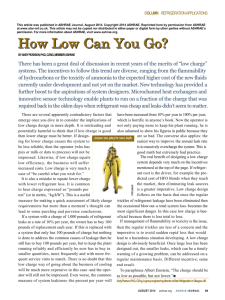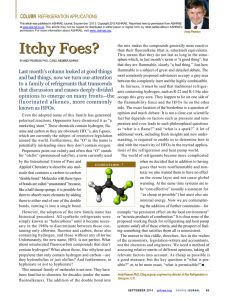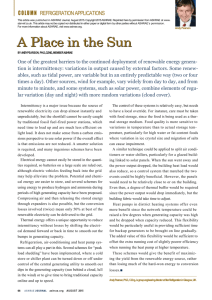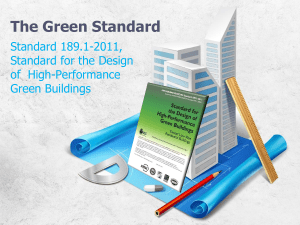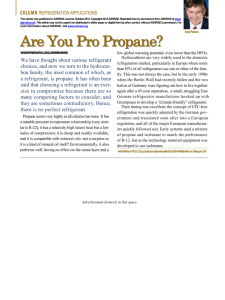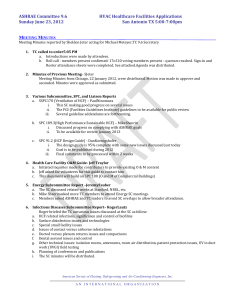Reducing Leakage
advertisement
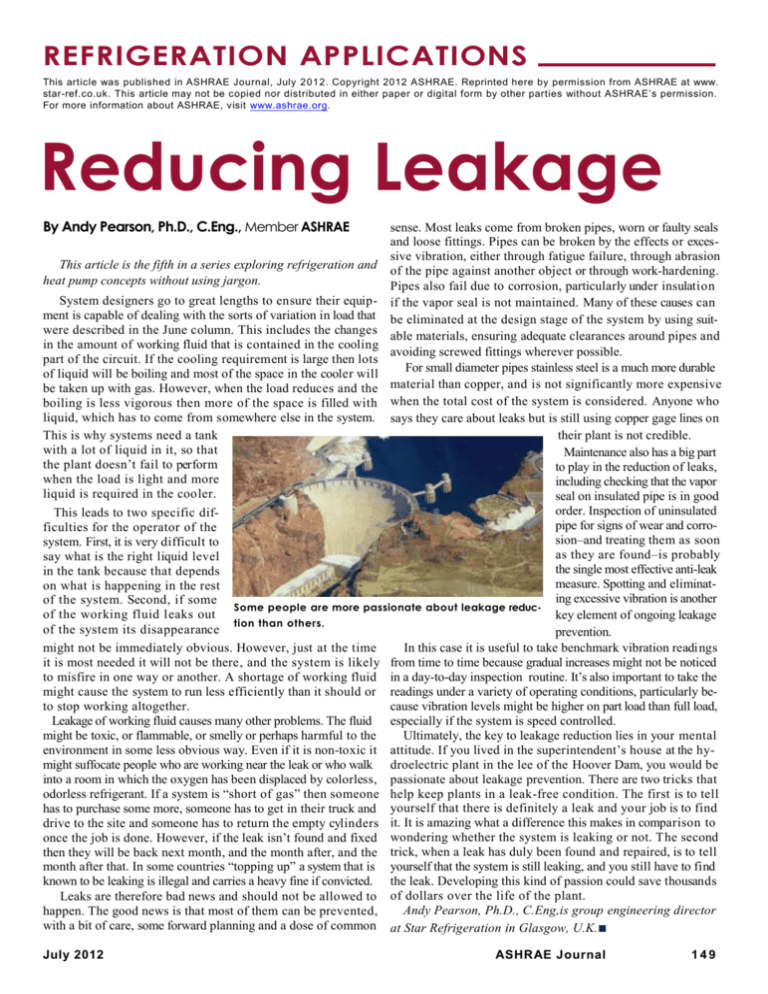
REFRIGERATION APPLICATIONS This article was published in ASHRAE Journal, July 2012. Copyright 2012 ASHRAE. Reprinted here by permission from ASHRAE at www. star-ref.co.uk. This article may not be copied nor distributed in either paper or digital form by other parties without ASHRAE’s permission. For more information about ASHRAE, visit www.ashrae.org. Reducing Leakage By Andy Pearson, Ph.D., C.Eng., Member ASHRAE sense. Most leaks come from broken pipes, worn or faulty seals and loose fittings. Pipes can be broken by the effects or excessive vibration, either through fatigue failure, through abrasion This article is the fifth in a series exploring refrigeration and of the pipe against another object or through work-hardening. heat pump concepts without using jargon. Pipes also fail due to corrosion, particularly under insulation System designers go to great lengths to ensure their equip- if the vapor seal is not maintained. Many of these causes can ment is capable of dealing with the sorts of variation in load that be eliminated at the design stage of the system by using suitwere described in the June column. This includes the changes able materials, ensuring adequate clearances around pipes and in the amount of working fluid that is contained in the cooling avoiding screwed fittings wherever possible. part of the circuit. If the cooling requirement is large then lots For small diameter pipes stainless steel is a much more durable of liquid will be boiling and most of the space in the cooler will material than copper, and is not significantly more expensive be taken up with gas. However, when the load reduces and the when the total cost of the system is considered. Anyone who boiling is less vigorous then more of the space is filled with liquid, which has to come from somewhere else in the system. says they care about leaks but is still using copper gage lines on This is why systems need a tank their plant is not credible. with a lot of liquid in it, so that Maintenance also has a big part the plant doesn’t fail to perform to play in the reduction of leaks, when the load is light and more including checking that the vapor liquid is required in the cooler. seal on insulated pipe is in good order. Inspection of uninsulated This leads to two specific difpipe for signs of wear and corroficulties for the operator of the sion–and treating them as soon system. First, it is very difficult to as they are found–is probably say what is the right liquid level the single most effective anti-leak in the tank because that depends measure. Spotting and eliminaton what is happening in the rest ing excessive vibration is another of the system. Second, if some Some people are more passionate about leakage reducof the working fluid leaks out key element of ongoing leakage tion than others. of the system its disappearance prevention. In this case it is useful to take benchmark vibration readings might not be immediately obvious. However, just at the time it is most needed it will not be there, and the system is likely from time to time because gradual increases might not be noticed to misfire in one way or another. A shortage of working fluid in a day-to-day inspection routine. It’s also important to take the might cause the system to run less efficiently than it should or readings under a variety of operating conditions, particularly beto stop working altogether. cause vibration levels might be higher on part load than full load, Leakage of working fluid causes many other problems. The fluid especially if the system is speed controlled. Ultimately, the key to leakage reduction lies in your mental might be toxic, or flammable, or smelly or perhaps harmful to the environment in some less obvious way. Even if it is non-toxic it attitude. If you lived in the superintendent’s house at the hymight suffocate people who are working near the leak or who walk droelectric plant in the lee of the Hoover Dam, you would be into a room in which the oxygen has been displaced by colorless, passionate about leakage prevention. There are two tricks that odorless refrigerant. If a system is “short of gas” then someone help keep plants in a leak-free condition. The first is to tell has to purchase some more, someone has to get in their truck and yourself that there is definitely a leak and your job is to find drive to the site and someone has to return the empty cylinders it. It is amazing what a difference this makes in comparison to once the job is done. However, if the leak isn’t found and fixed wondering whether the system is leaking or not. The second then they will be back next month, and the month after, and the trick, when a leak has duly been found and repaired, is to tell month after that. In some countries “topping up” a system that is yourself that the system is still leaking, and you still have to find known to be leaking is illegal and carries a heavy fine if convicted. the leak. Developing this kind of passion could save thousands Leaks are therefore bad news and should not be allowed to of dollars over the life of the plant. Andy Pearson, Ph.D., C.Eng,is group engineering director happen. The good news is that most of them can be prevented, with a bit of care, some forward planning and a dose of common at Star Refrigeration in Glasgow, U.K.■ July 2012 ASHRAE Journal 149


